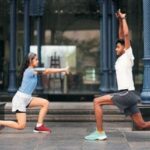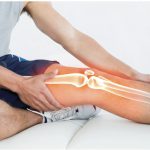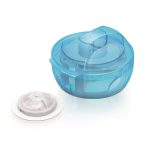Imagine you’re in a tourist destination, a hill station that is known for its natural beauty and the spell that it casts on the onlooker, snow-clad
all!! mountains that seem to envelop the whole earth in its white drape. You wish to capture this beauty, this frame in your high-quality camera for years to come. As you take out your camera and click the photo, you find that the photograph has not come out quite as you had wished it. You click again and again and each time you find something that is off the mark. You sincerely wish that you had put in some money and purchased a tripod when you had the chance. But nothing can be done now and you have to manage with what you have right now.
Although travelling to that bucket list destination and clicking scenic photographs is a distant dream for everyone due to the ongoing COVID pandemic, the intention here is to highlight the importance of having a tripod to make good pictures better. Just like photography, our health also rests on a tripod – a healthy diet, a good shut-eye and regular exercise.
Exercise impacts the body in multiple ways:
• It improves energy expenditure by proper digestion of food
• It strengthens the muscles all over the body
• It improves breathing capacity thereby improving oxygen level in the blood
• It helps release toxins from the body in the form of sweat and improves the skin
• It promotes brain function and protects the memory
• It improves the quality of sleep
• It relieves stress and anxiety and promotes a good mood
To create a good picture of your health, your day to day life must rest on this tripod. Due to the COVID pandemic, the states and nations have imposed strict movement curbs to avoid transmission of the infection. Yet, life must go on. As we all have found our way around working from home, this five-part cover story presents a workaround for outdoor physical activity and attempts to find ways to stay fit and motivated from the comfort of our homes. As we are all in this together but in separate places, let’s workout from home and prepare ourselves for a healthy and rejuvenated tomorrow.
Simple Home Exercises to Keep Fit
Dr Nikita Morwal provides easy exercises to do at home
In the ongoing COVID-19 pandemic, there are extensive social distancing policies put into place, restricting our daily activities.
Staying at home has transcended into sedentary life for a prolonged period. People are spending most of their time at home and have fewer opportunities to be physically active, especially when
gymnasiums and outdoor sports clubs are shut. Furthermore, people have discontinued their regular walking or jogging regime due to movement restrictions. The impact of this physical inactivity could be seen in aspects such as individual health, social care and the mental well-being of people all across the globe.
Although these social distancing measures are important and needed now, our bodies and minds still require physical activity. In the COVID-19 pandemic, it is even more important for people to stay physically active, even if it is only a short break from sitting at your desk and walking some distance or stretching. This will not only ease the muscle strain but also improve blood circulation. Having a fitness routine in your day’s schedule will help improve muscle activity and relieve mental tension.
Remember – any physical activity is better than none!
Home workout ideas
Start with a 10-minute warm-up followed by aerobic exercises like marching at one place or a light jog on the spot for about 15-20 minutes for 5 days a week.
Self-resistance exercises can be easily done at home in the form of wall push-up, sit ups, squats, planks, reverse planks and can be repeated about 10-12 times at least thrice a week for muscle strengthening.
The workout session must end with
cool-down exercises for about 10 minutes.
The warm-up and cool-down phase include flexibility exercises like:
• Ankle movement (back-forth and ankle rotations clockwise and anti-clockwise)
• Calf and hamstring stretching
• Trunk side bending exercise by standing
• Arm raises and arm rotations
• Neck movements in four directions
Chair yoga is a modified way of practising
yoga asanas with the help of a chair as a part of yoga therapy. Chair yoga has been found beneficial for improving the quality of life in older people along with improving balance, lower limb strength, lowering depression and increasing vitality. These yoga asanas can be done by anybody irrespective of age and health conditions.
Few chair yoga asanas are explained below:
Cat-cow stretching exercise
1. Sit straight on a chair with both feet on the floor and place your hands on your knees or place them on the top of your thighs.
2. Now gently inhale and simultaneously arch your back, gradually rolling your shoulders down and back. Now bringing your shoulder blades onto your back, you have attained the ‘cow position’.
3. Slowly exhale, rounding your back or spine and drop your chin to your chest and try to touch chin to the chest. Let the shoulders and head come forward thereby attaining the ‘cat position’.
4. Repeat and continue moving between
cow and cat with about 5-7 inhalations and exhalations.
Spinal twist • Ardha matsyendrasana
1. Sit sideways on the chair with the back straight, facing to the left side.
2. Holding on to the chair, twist your torso towards the left side for a spinal twist.
3. Inhale slowly and lengthen your spine on each inhale, simultaneously twist on
each exhale for five to seven breaths.
4. Gradually, move your legs around to the right side of the chair and repeat the twist to the right side five to seven times.
Raised Hands Pose • Urdhva hastasana
1. Raise and stretch your arms towards the ceiling and inhale deeply.
2. Maintain good upper body posture keeping your shoulders relaxed. Anchor your hips firmly to your chair seat and reach up from there, stretching upwards as much as possible.
3. Repeat this five to seven times with deep inhalation.
Isometric exercises for the elderly
Elderly individuals can also practise isometric (static strength training) exercises for maintaining the strength of the legs
Knee isometrics sitting towel press
1. Lie down straight or sit with your leg extended and keep a towel roll beneath the knee.
2. Tighten the quads muscles in front of the leg, trying to push the back of the knee down on the towel roll.
3. Hold the contraction for 10 seconds.
4. Repeat the exercise 10 times on each leg.
Note: Do not press both legs simultaneously while doing the exercise. It should be done one leg at a time.
Terminal knee extension
1. Keep a bolster below the knees as if making an angle of about 45 degrees.
2. Now slowly straighten the right knee by tightening muscles on top of the thigh.
3. Maintain and hold the contraction for at least 10 seconds.
4. Repeat the exercise 10 times with each leg.
Straight leg raise supine
1. Keep the right leg straight, the other leg bent comfortably, and slowly raise your right leg to about 30 degrees or
15 to 20 inches from the floor or bed.
2. Hold the position for 10 seconds
3. Repeat the exercise 10 times with each leg.
Side leg raises
1. Lie comfortably on one side and bend the bottom leg.
2. Straighten the top leg and raise it to 45 degrees as if pointing your toes towards the floor.
3. Hold for 10 seconds, then lower and relax briefly.
4. Repeat 10 times with both legs.
Calf raises
Stand facing the back of a sturdy chair or the back of a couch or holding a tabletop
or a kitchen platform. Slowly raise the heels as high as you can, then lower. Repeat this exercise 10 times in 3 sets.
Hamstring curls
Stand facing the back of a sturdy chair or the back of a couch or holding a tabletop or a kitchen platform. Lift one leg from the floor and bend from the knee as if trying to touch your butt with your heel. Repeat this 10 times with both legs.
Elderly individuals can practise isometric exercises for quadriceps, hamstrings, VMO strengthening and abductor strengthening for maintaining the strength of legs.
Also, balancing exercises like standing on toes, single leg balance and heel-to-toe walking or standing can be done regularly.
Things to remember
1. Practise breathing exercises or pranayama every day for at least 10- 15 minutes. It could be
simple breath awareness technique, deep breathing or alternate nostril breathing or chanting Omkar.
2. A short walk for about ten minutes or sitting in vajrasana for about
7-10 minutes after a meal helps to promote digestion.
3. Do not exercise if you have a fever, cough or difficulty breathing (also symptoms of COVID-19 disease).
4. Practise social distancing when exercising outdoors and practise good hand hygiene before and after exercise.
5. In case you are not used to physical activity, you may start slow with
low-intensity activities such as walking. You may start low impact exercises for shorter periods and gradually build up over time till you get used to this regimen.
6. Choose the right activity to reduce the risk of injury; the intensity of the exercise should match your fitness levels and health status.
Dr Nikita Morwal is a consultant physiotherapist
and certified Yoga trainer.














